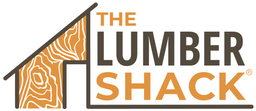Lumber Characteristics & Defects
Our sawyer here at The Lumber Shack has an exceptional eye for detail when selecting the lumber logs used to saw quality lumber slabs that are sure to catch your eye. The term live edge, also known as "natural edge" is a style of furniture where the builder incorporates the natural edge of the wood into the design of the piece. By using this technique to build strong, natural and unique pieces of furniture, there are some characteristics in our pieces that may be considered defects to some, however, we consider a lot of them to be highlights on most of the lumber slabs and pre-finished furniture we have to offer. These characteristics are both the natural growth characteristics and manufacturing imperfections of a piece of wood. Some characteristics are important in the evaluation of strength, others may be of minor importance to strength, but very significant to appearance. Below is a list of some of these features:
Knots:
One of the most obvious lumber characteristics. A knot is a portion of a branch or a limb that has become incorporated in a piece of lumber. The knots described in our lumber are generally sound knots, unsound knots, and knot holes.
Sound Knots are solid across the surface, at least as hard as the surrounding wood, and shows no indication of decay.
Unsound Knots have cracks or void or are noticeably softer than the surrounding wood.
A knothole is a knot that has fallen out, leaving a hole.
Wane:
The presence of bark or the lack of wood fiber along the edge of a piece of lumber. Bark may be present, or part of the edge may be missing.
Worm Hole:
Any hole made by boring insects or their larvae.
Planer Snipe:
The planer "snipe" attribute is defined when a planer cuts a little bit deeper at the beginning or end of a long board. The planer snipe effect is usually quite subtle, but if you run your fingers along the board, you can usually feel a slight step. Shining a light on the board at a low angle also reveals it.
For small thickness planers, snipe is primarily caused by the movement of the cutter head assembly. I constructed a simple wooden model to illustrate what happens.
As the board exits the planer, the infeed roller runs off the end of the board. The rubber rollers apply quite a bit of downward pressure to the board, and as the roller rolls off the board, there is a lot less upward pressure against the head assembly from the roller, so the whole head assembly typically moves down a tiny bit.
